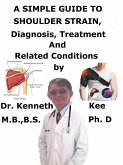Costochondritis is a benign disorder causing chest pain in 30% patients.
Costochondritis is a mostly harmless disorder caused by inflammation of the costal cartilages or the area where the ribs meet the sternum, termed sternal articulations
Chest wall pain is the main symptom.
Most people mention the pain as sharp, achy, and pressure-like.
chest pain normally gets worse if the patient breathes deeply or moves the upper body.
When the patient presses on the chest, the inflamed area feels tender and painful.
The chest pain normally persists for a few weeks or months, but about 33% of those with costochondritis will have it for about a year.
As with any chest pain, the history of present illness, past medical history, social history, family history, and an evaluation of body systems is very important.
Many life threatening causes of chest pain (heart attack) should be excluded before establishing a diagnosis of costochondritis.
The chest pain history is a significant indicator of acute coronary syndrome, pulmonary embolism, aortic dissection, pneumonia, esophageal injury, pneumothorax, among others.
If there was recent trauma or fall, an occult rib fracture may have occurred.
Other causes of chest pain must be excluded with history, physical exam, and diagnostic testing before a diagnosis of costochondritis.
While costochondritis is a frequent cause of chest pain, other causes of chest pain are:
Injury,
Physical strain,
Respiratory infection,
Rheumatoid arthritis or psoriatic arthritis,
Chest wall infections,
Tumors, or
Rare disorders like relapsing polychondritis
Normally, if chest wall pain is due to costochondritis, the patient will give a history of the pain which becomes worse with movement and certain positions.
The pain will also normally become worse when the patient takes a deep breath.
The pain quality is inconsistent, but it may be mentioned as sharp or dull pain.
If the patient has radiating pain, shortness of breath, dizziness, exertional chest pain, fever, productive cough, nausea, etc., these are more likely due to other causes of chest pain.
Other causes of chest pain should be excluded before making a costochondritis diagnosis.
If a patient's chest wall pain is caused by costochondritis, the pain can be normally reproduced by mild-to-moderate palpation.
Often, there is positional tenderness where one or two ribs meet the sternum.
If the patient is over 35, at risk for coronary artery disease, a blood clot, or the patient recently had a respiratory infection, the doctor may do additional tests like a chest X-ray and ECG to exclude more serious heart and lung disorders.
The purpose of the evaluation is to establish other causes of chest pain.
The doctor will focus on pain relief, and will probably treat with
Pain relievers like aspirin or ibuprofen
Hot compresses or a heating pad to the area
No physical activities that make the pain become worse
The doctor may advise the patient on how to improve the posture and fix any muscle imbalances.
If the pain does not go away, the doctor may give the patient an injection of corticosteroid in the area that is painful.
The treatment for costochondritis is a non-steroidal anti-inflammatory drug (NSAID).
Physical therapy is a treatment method for refractory costochondritis
TENS therapy (nerve stimulation) may relieve the pain of costochondritis
TABLE OF CONTENT
Introduction
Chapter 1 Costochondritis
Chapter 2 Causes
Chapter 3 Symptoms
Chapter 4 Diagnosis
Chapter 5 Treatment
Chapter 6 Prognosis
Chapter 7 Myocardial Infarction
Chapter 8 Pulmonary Infarction...
Dieser Download kann aus rechtlichen Gründen nur mit Rechnungsadresse in A, B, CY, CZ, D, DK, EW, E, FIN, F, GR, H, IRL, I, LT, L, LR, M, NL, PL, P, R, S, SLO, SK ausgeliefert werden.









